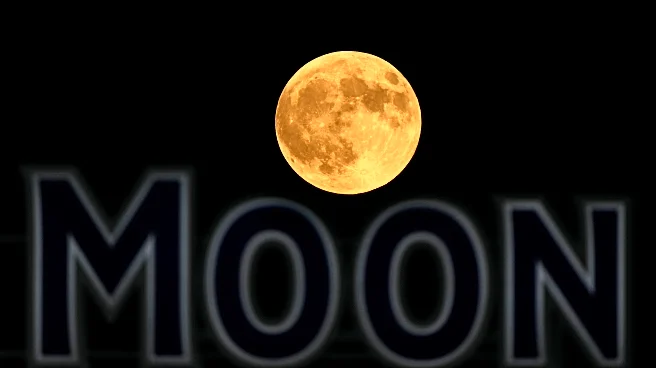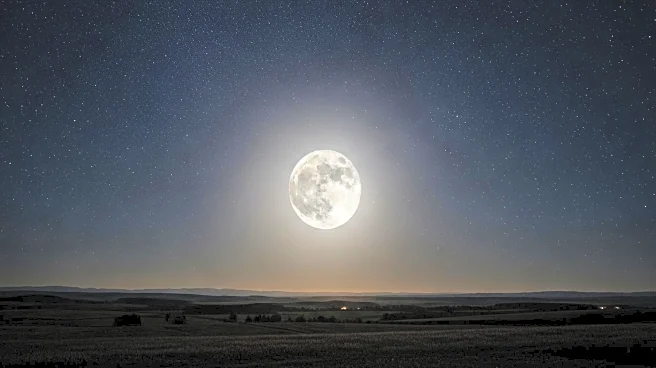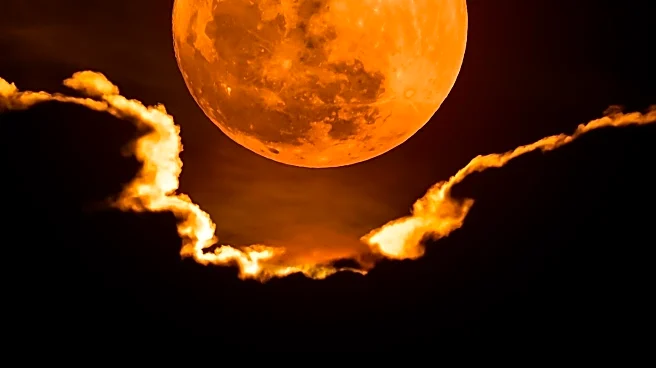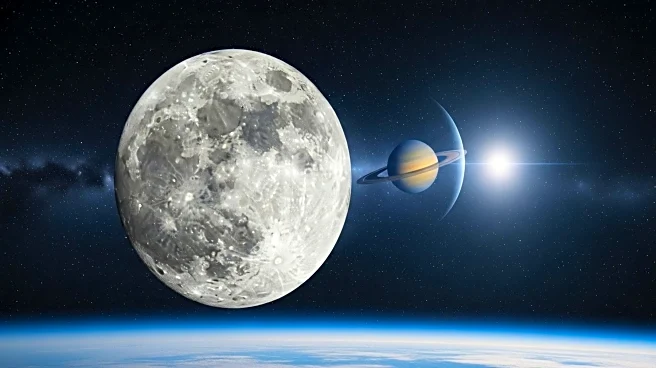What's Happening?
The first supermoon of the year is set to appear on Monday night, offering a celestial spectacle as the moon will appear slightly larger and brighter than usual. This phenomenon occurs when a full moon is at its closest point to Earth in its orbit, making it look up to 14% bigger and 30% brighter than the faintest moon of the year, according to NASA. This October supermoon is the first of three expected this year, with subsequent supermoons slated for November and December. The event is visible worldwide without the need for special equipment, provided the skies are clear. Derrick Pitts, chief astronomer at the Franklin Institute in Philadelphia, notes that while the difference in size and brightness is subtle, it is a notable event for astronomy enthusiasts.
Why It's Important?
The supermoon provides an opportunity for the public to engage with astronomy and appreciate the natural wonders of the night sky. Such events can spark interest in space science and encourage educational activities related to astronomy. For scientists, supermoons offer a chance to study the moon's surface and its effects on Earth, such as tides. The increased brightness and size can also enhance the visibility of lunar features, making it an ideal time for amateur astronomers to observe and photograph the moon. Additionally, these events can have cultural significance, often inspiring art and folklore.
What's Next?
Following the October supermoon, the closest supermoon of the year is expected in November, with another in December. Looking ahead to 2026, two lunar eclipses are anticipated: a total eclipse visible across much of North America, Asia, and Australia in March, and a partial eclipse in August across the Americas, Africa, and Europe. These upcoming events will continue to provide opportunities for public engagement and scientific observation.












